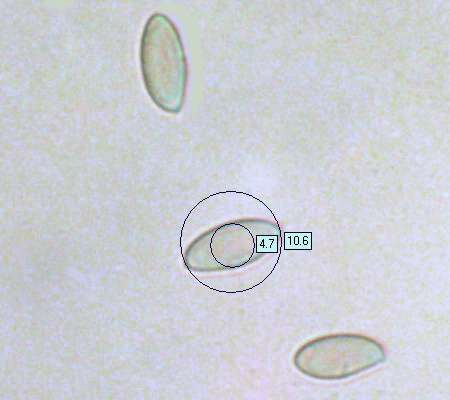Suillus viscidus (L.) Roussel - Sticky Bolete
Phylum: Basidiomycota - Class: Agaricomycetes - Order: Boletales - Family: Suillaceae
Distribution - Taxonomic History- Etymology - Identification - Culinary Notes - Reference Sources
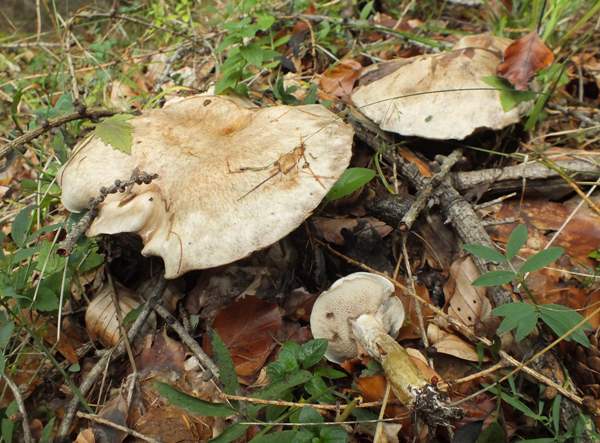
Suillus viscidus , commonly known as the Sticky Bolete, is a summer and autumn fungus. The very slimy (when wet) cap surface and overall pale coloration are features that help distinguish it from other members of the genus Suillus.
This largish bolete is often seen in large numbers beside paths in larch plantations, but it could easily be confused with one or more of the scaberstalk boletes, Leccinum species, most of which have whitish forms or varieties.
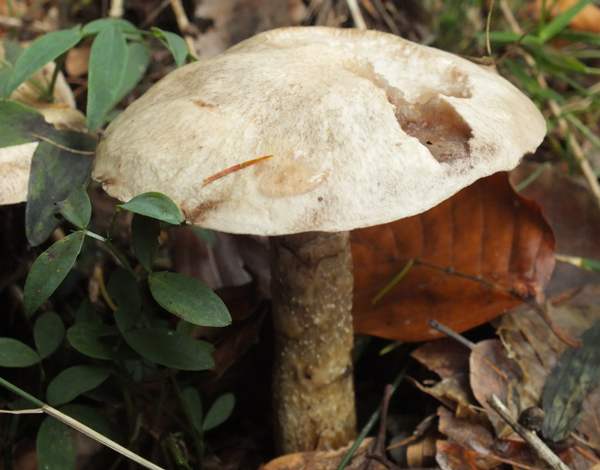
Distribution
Suillus viscidus is an uncommon find in Britain and Ireland, where it is found mainly in larch plantations but occasionally also under larches in parkland. This bolete copes well in cold northern climes and is fairly common in Scandinavia. The Sticky Bolete occurs also in other parts of mainland Europe wherever larch trees (Larix spp.) grow.
Taxonomic history
When in 1753 Carl Linnaeus described this bolete he called it Boletus viscidus. The currently accepted scientific name of the Sticky Bolete, Suillus viscidus, dates from a 1796 publication by the French mycologist Henri François Anne de Roussel (1748 - 1812).
Synonyms of Suillus viscidus include Boletus viscidus L., Boletus aeruginascens Secr., Boletus laricinus Berk., Ixocomus viscidus (L.) Quél., Suillus laricinus (Berk.) Kuntze, Suillus aeruginascens Secr. ex Snell, and Fuscoboletinus aeruginascens (Secr. ex Snell) Pomerl. & A.H. Sm.
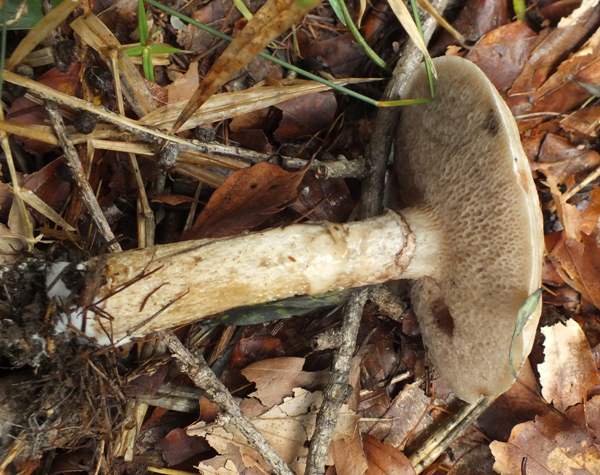
Etymology
The specific epithet viscidus means viscid, of course, while the generic name Suillus comes from the Latin noun sus, meaning pig. Suillus therefore means 'of pigs' (swine) and is a reference to the greasy nature of the caps of all fungi in this genus.
Identification Guide
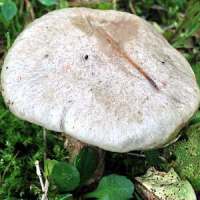 |
CapHemispherical when young, expanding to become broadly convex or almost flat, 6 to 10cm in diameter; off white when young, yellowing and later darkening to ochraceous grey with age; covered in a thick coating of viscid glutinous translucent slime that remains tacky even in very dry weather. |
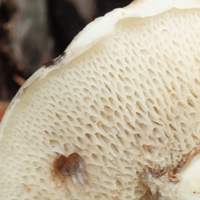 |
Tubes and poresBeneath the cap, a white veil covers the young pores of this bolete, fracturing to leave a thin stem ring that soon collapses against the stem and becomes discoloured clay brown by falling spores. The off-white to pale grey tubes are adnate or slightly decurrent to the stem; they terminate in oval pores that are concolorous with the tubes. StemCylindrical or slightly clavate, 1 to 2cm in diameter and 5 to 10cm tall, the stem is whitish above the ring zone and noticeably darker, often with an olive tinge below. |
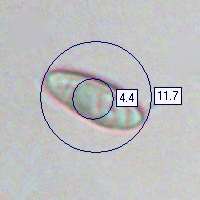 |
SporesEllipsoidal to sub-fusiform, smooth, 8-14 x 4-5μm. Spore printClay brown. |
Odour/taste |
Odour not distinctive; taste slightly acidic. |
Habitat & Ecological role |
Mycorrhizal; beneath larch trees, usually on calcareous or sandy soils. |
Season |
August to October in Britain and Ireland. |
Similar species |
Suillus grevillei has a bright yellow-orange cap and angular pores; it also occurs under larch. |
Culinary Notes
Although not generally rated highly, the Sticky Bolete is reported to be edible when thoroughly cooked. To reduce the risk of an adverse reaction to these kinds of mushrooms some people have found it beneficial to discard the cap skin of all species from the Suillus genus.
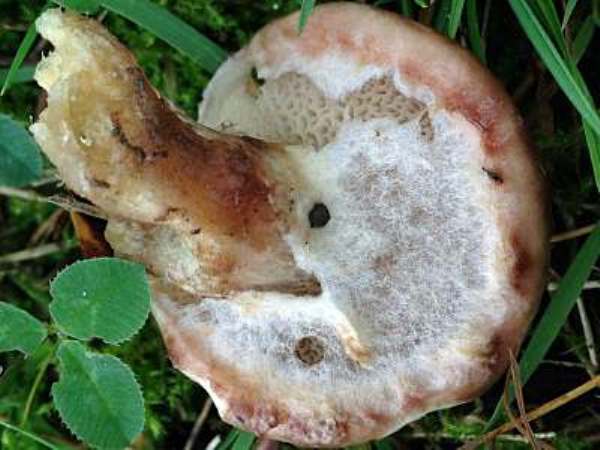
Acknowledgements
This page includes pictures kindly contributed by Simon Harding.
Reference Sources
Fascinated by Fungi, 2nd Edition, Pat O'Reilly 2016, reprinted by Coch-y-bonddu Books in 2022.
British Boletes, with keys to species, Geoffrey Kibby (self published) 3rd Edition 2012
Roy Watling & Hills, A.E. 2005. Boletes and their allies (revised and enlarged edition), – in: Henderson, D.M., Orton, P.D. & Watling, R. [eds]. British Fungus Flora. Agarics and boleti. Vol. 1. Royal Botanic Garden, Edinburgh.
BMS List of English Names for Fungi
Dictionary of the Fungi; Paul M. Kirk, Paul F. Cannon, David W. Minter and J. A. Stalpers; CABI, 2008
Taxonomic history and synonym information on these pages is drawn from many sources but in particular from the British Mycological Society's GB Checklist of Fungi.
Fascinated by Fungi. Back by popular demand, Pat O'Reilly's best-selling 450-page hardback book is available now. The latest second edition was republished with a sparkling new cover design in September 2022 by Coch-y-Bonddu Books. Full details and copies are available from the publisher's online bookshop...
